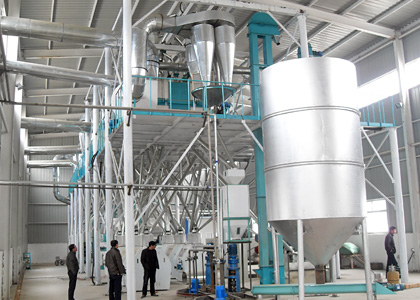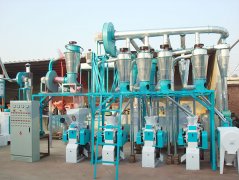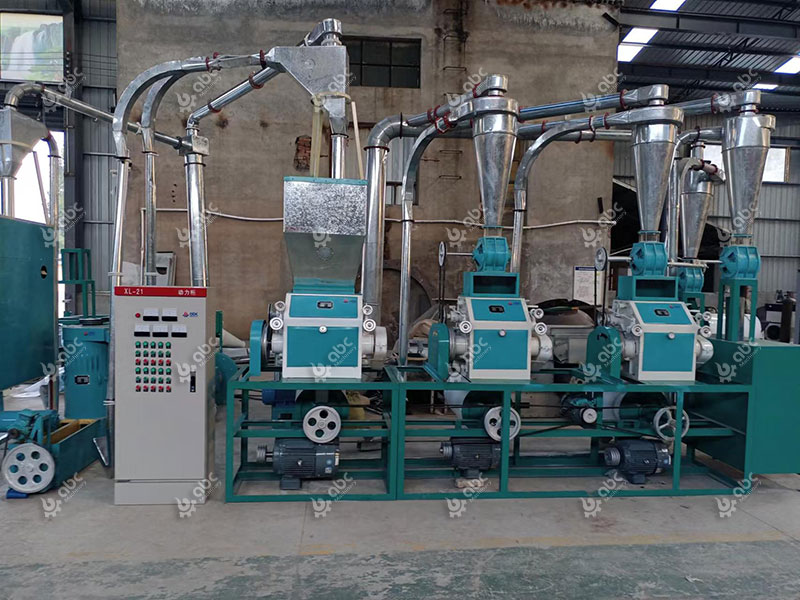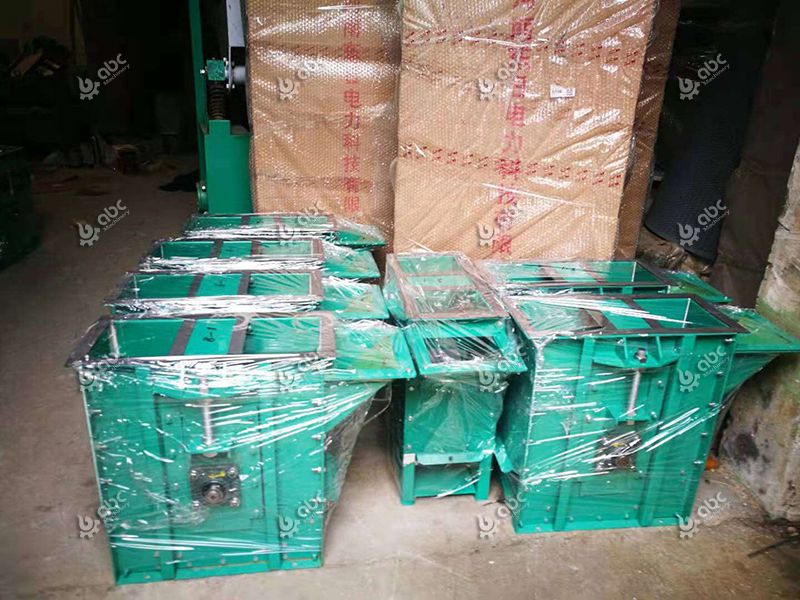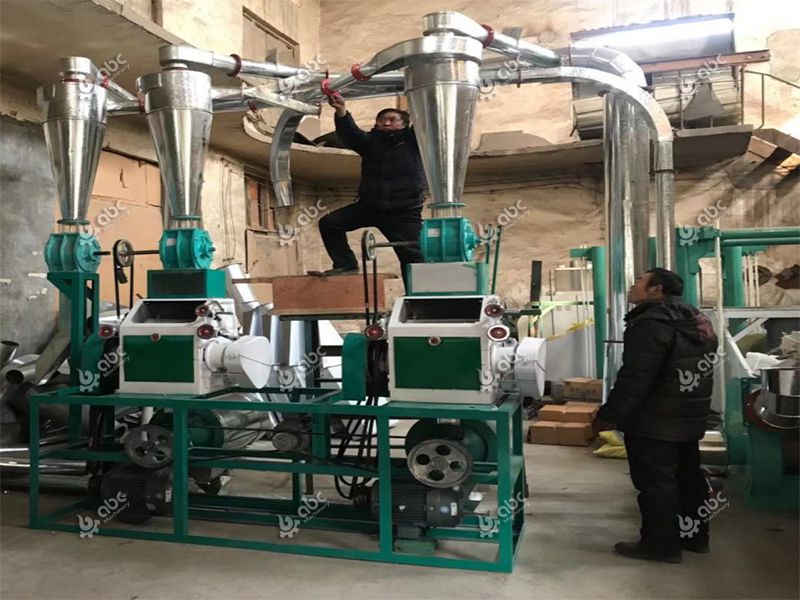Corn Milling Projects: Equipment and Layout Design
In the global food processing industry, corn (maize) remains a staple crop, driving demand for efficient corn milling projects—from small-scale backyard setups to large commercial plants.
Whether you’re an entrepreneur planning to launch a small maize milling machine operation or a large-scale flour mill project, one critical question looms: How do you select the right equipment and design a layout that balances efficiency, safety, and profitability? This guide breaks down the core components of corn milling projects, focusing on equipment selection, layout design, and cost optimization to help you build a sustainable, profit-driven venture.
What Equipment Do You Need for a Corn Milling Project? A Categorized Guide
The success of a corn milling project hinges on choosing the right equipment, each component plays a role in transforming raw corn into high-quality flour, grits, or other products. Below is a breakdown of essential equipment, categorized by processing stage, to help you match your needs (small-scale vs. large-scale) with the right machinery.
Preprocessing Equipment: Laying the Foundation for Quality
Preprocessing removes impurities and prepares corn for grinding, ensuring final products meet safety and quality standards. Key equipment includes:
-
Corn cleaning machines: Remove dirt, stones, and debris—critical for protecting downstream equipment (e.g., rollers) and avoiding contamination. Learn more about the importance of this step to maintain equipment longevity and product safety.
-
Maize huller machine: Peels the outer hull of corn, a necessary step for producing refined flour. Small-scale operations may opt for compact hullers, while large plants use automated models to handle higher throughput.
-
Corn crusher machine / Maize crushing machine: Reduces whole corn kernels into smaller pieces, easing the grinding process and improving overall processing efficiency.
Grinding Equipment: The Heart of Corn Milling
Grinding is the core stage of corn processing, and the choice of machine depends on your output goals, product type, and budget. Common options include:
-
Corn roller mill: Ideal for large-scale projects (e.g., 40T wheat-corn combined mills like those operating in Ethiopia). Roller mills use steel rollers to grind corn evenly, producing consistent flour—they outperform stone mills in speed and scalability, making them a top choice for high-volume operations. (Related Post: Stone Flour Mill Machine VS. Roller Flour Mill Machine)
-
Maize grinding machine / Corn grinder machine: Suitable for small-scale operations (e.g., home use or small businesses). Compact electric grinders are popular in Pakistan and Uganda, offering portability and ease of use for startups with limited space.
-
Small scale maize milling machine / Mini maize milling machine: All-in-one units for startups, combining cleaning, hulling, and grinding functions. These are cost-effective for entrepreneurs looking to minimize initial investment while covering core processing needs. (Read More: How to Start Your Own Small-scale Maize Flour Mill?)
-
Grains grinding machine: Versatile machines that process corn, wheat, and other grains—ideal for businesses looking to diversify their product lines and cater to broader market demands.
Post-Processing & Finishing Equipment
After grinding, equipment refines and packages the final product to meet market standards:
-
Corn grits machine / Maize grits machine: Separates corn into grits of different sizes, a high-demand product in many African markets for traditional dishes and snacks.
-
Corn flour making machine / Corn flour mill machine: Polishes and sieves ground corn into fine flour, ensuring uniformity in texture and quality—critical for retail and commercial food production.
-
Packaging machines: Automated or manual units to package flour/grits for retail. Proper packaging maintains freshness, extends shelf life, and enhances brand recognition.
How to Design an Efficient Maize Milling Plant Layout? Principles & Examples
A well-designed layout minimizes waste (time, labor, energy), enhances safety, and scales with your business. But what key principles should you follow, and how do layouts differ for small vs. large projects?
Core Principles of Maize Milling Plant Layout
-
Process Flow Optimization: Arrange equipment in the order of processing (cleaning → hulling → crushing → grinding → finishing) to avoid backtracking. This reduces material handling time, cuts labor costs, and speeds up overall production.
-
Space Utilization: For small plants (e.g., home flour milling machine setups), use vertical space with stacked equipment to maximize limited floor area. Large plants should allocate separate zones (raw material storage, processing, finished goods) to avoid congestion and streamline operations.
-
Safety & Compliance: Leave wide walkways for workers to move freely, install proper ventilation to reduce dust buildup (a common hazard in grinding operations), and place emergency exits near high-risk areas (e.g., grinding machines, electrical panels).
-
Future Scalability: Design layouts with extra space for adding equipment (e.g., a second corn roller mill or additional packaging lines) as your business grows, avoiding costly renovations later.
Layout Examples by Project Scale
| Scale | Key Layout Features | Equipment Focus |
|---|---|---|
|
Small-Scale (50-500 kg/day) |
Compact, single-line layout; equipment placed near power sources to reduce wiring costs; small, climate-controlled storage areas for raw corn and finished products. |
Mini maize milling machine, home flour milling machine |
|
Large-Scale (1T+/day) |
Zoned layout (storage → preprocessing → grinding → packaging); automated conveyor systems to move materials between zones; dedicated maintenance areas for equipment upkeep. |
Large scale flour mill equipment, multiple corn roller mills |
Common Layout Mistakes to Avoid
-
Ignoring raw material storage: Inadequate or poorly ventilated storage leads to corn spoilage (especially in humid climates like Tanzania), resulting in wasted resources and lost revenue.
-
Poor ventilation: Dust buildup from corn grinding machine operations causes respiratory health risks for workers and accelerates equipment wear, increasing maintenance costs.
-
Neglecting logistics: Placing finished goods storage far from loading docks increases delivery time and labor costs, as workers must transport products longer distances.
How to Control Costs & Maximize Profits in Corn Milling Projects?
Equipment and layout design directly impact your project’s cost and profitability. Below is a breakdown of cost factors and strategies to boost returns.
Equipment Cost Breakdown (with Regional Examples)
Maize milling machine prices vary by scale and region, influenced by local manufacturing capacity and demand. Use the table below to budget effectively:
| Equipment Type | Small-Scale Price Range (USD) | Large-Scale Price Range (USD) | Regional Price Notes |
|---|---|---|---|
| Mini maize milling machine | $500 – $2,000 | N/A | Lower in Pakistan, where small-scale machinery is mass-produced to meet local startup demand |
| Corn roller mill | $2,000 – $10,000 | $15,000 – $100,000+ | Higher in South Africa, due to import costs for specialized steel components and local safety certifications |
| Maize huller machine | $300 – $1,500 | $2,000 – $10,000 | Competitive prices in Kenya, with local suppliers offering tailored models for small and medium-sized farms |
| Complete small-scale plant | $5,000 – $20,000 | N/A | Prices vary by included features (e.g., automated cleaning vs. manual) and can be negotiated with suppliers for bulk or custom orders |
Layout-Related Cost Savings
-
Optimize material flow: A linear layout reduces conveyor belt length, cutting energy costs by 10–15% and lowering maintenance expenses for moving parts.
-
Share space strategically: For small businesses, combine raw material and finished goods storage (with physical separators like shelves or partitions) to reduce rental costs without compromising product safety.
-
Choose local suppliers: Sourcing equipment from regional vendors (e.g., maize milling machine suppliers in Tanzania) lowers shipping costs and ensures easier access to maintenance support.
Profit-Boosting Strategies
-
Diversify Products: Use your corn processing machinery to produce not just flour, but also grits, cornmeal, and animal feed—tap into multiple market segments (retail consumers, restaurants, livestock farmers) to increase revenue streams.
-
Adopt Energy-Efficient Equipment: Modern corn grinding machines use 20% less energy than older models, reducing monthly utility bills and lowering your carbon footprint (a selling point for eco-conscious customers).
-
Create a Detailed Business Plan: A comprehensive plan helps secure funding from lenders or investors, sets clear sales targets, and identifies potential cost risks (e.g., fluctuating corn prices) before they impact profits.
-
Target High-Demand Regions: Launch small-scale projects in areas like Uganda or Nigeria, where corn products are staples and local competition is less saturated—these markets often have unmet demand for affordable, high-quality corn flour.
Corn milling projects require careful planning—from selecting the right maize milling machine to designing an efficient layout. By focusing on equipment that matches your scale, following layout principles that prioritize flow and safety, and controlling costs through smart choices, you can build a profitable venture. Take action today!


